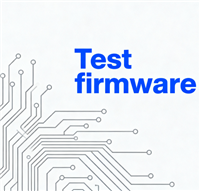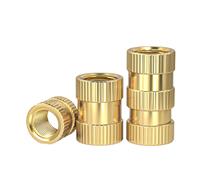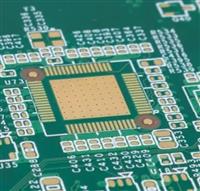Q:1.PCBWay.comはだれですか。
PCBWay is manufacturer specializing in PCB prototyping, low-volume production and PCB Assembly service under one roof. PCBWay strives to be the easiest manufacturer for engineers to work with. PCBWay – PCB Prototype the Easy Way!
Q:2.あなたはPCBWayによって作られていないボードを組み立てることを受け入れますか?
現在、他社のPCBを使用して施設内で組み立てることはしていませんが、お客様の時間と費用を節約するために、PCB製造、部品調達、およびPCB組み立てを連続的かつ円滑に行っています。
Q:3.私のPCBA注文に対してどのようなファイルや文書を要求しますか?
私達にあなたのPCBの発注のためのGerberファイル、CentroidデータおよびBOMがある私達と既にあなたのPCBの発注をしたように、実際にあなたはあなたのPCB Gerberファイルがシルクスクリーン、銅トラックおよびはんだののりの層を含んでいれば PCB Gerberファイルに上記の3つの層のいずれかが欠けている場合は、これがPCBAの最低限の要求であるため、それらを再送信してください。 あいまいで部品の配置が間違っていることもありますが、ほとんどのアセンブラーでは必要ありません。
Q:4.Centroidとは何ですか?
Centroidは、アセンブリマシンをすばやくプログラミングするために使用されるアセンブリ用の特殊ファイルで、別名Insertion、Pick-N-Place、またはXY Dataとも呼ばれます。 Centroidファイルには、すべての表面実装部品の位置と方向が記述されており、参照指定子、XとYの位置、回転とボードの側面(上または下)のみが含まれています。 表面実装部品はセントロイドに記載されています。
Q:5.受託注文またはキット注文の部品の出荷およびマーキングはどのように依頼しますか?
個々のパッケージや箱にBOM、製造元の部品番号、または顧客の部品番号、数量の対応する行番号をマークできることを願っています。
Q:6.受託/キッティングされたPCBAの部品の過給に対するあなたの要求は何ですか?
Unused and excessive parts supplied by you or purchased by us will not be returned by default. If you want the parts to be sent back to you with the assembled boards, please contact your service representitive or make a note on your related order, and let us know which parts to send.
リールに供給されていないSMT部品は、1本の連続したテープの上になければなりません。
同じSMT部品を異なるボードに組み立てる必要がある場合は、それらをストリップにカットしないでください。テープの連続ストリップまたはリールに保管してください。
抵抗器、コンデンサ、ダイオード(0603、0805、1206、2225、SOT、SOD、MELF - パッケージ)は最小50個必要で、必要な数量を30個超える必要があります(例:数量40個の組み立て - 必要になります)。 70個 - これは私達の最低50個と組立量の30個以上を満たしています。
抵抗器、コンデンサ、ダイオード(0201、0402、miniMelf、ミニチュアパッケージ)は、最低100個が必要量を50個超えなければなりません(例:組み立て数量80個 - これは最低限130個必要です)。 100個プラス50個以上の組み立て数量)
IC, BGA, QFP,コネクタなどの高価な部品について,少量の余分な(部品の総数に基づく1-5件)を必要とし,それは顺调に组み立てられ,时间通りにあなたの组み立て板を出荷することを确保する。もし質問や質問があれば、私たちにもっと情報を送ったり連絡して回答を獲得してください。
Q:7.私のアセンブリ用にいくつかの部品を調達できますか?
あなたはいくつかの部品を供給するかもしれません、そして、我々はあなたに代わって部品の残りを調達します。 代用が必要です、我々は再びあなたの最終的な承認を求めます。
Q:8. BGAを組み立てますか?これに関する特別な要件はありますか?
はい、X線検査で0.25mmピッチのBGAを処理する能力があります。BGAの場合、2つの設計があります。1つは、穴がパッド上にあること、もう1つは、穴がパッドの隣にあり、パターンの近くにあることです。溶接の品質を確保するために、BGAのパッド近くのビアにレジストカバーする必要があります。また、パッド上のビアについては、良好な溶接の品質を確保するためにビアに樹脂を充填する必要があります。
Q:9.余分な未使用の部品はどのように取り扱っていますか?
余分な部品が存在するのは、委託/キッド注文の場合、超過分の何パーセントかを請求するか、これらのターンキー注文の場合と同じ目的で購入するためです。 積まれた板、またはあなたの次の順序のための私達の棚にそれらを保ちなさい。
Q:10. PCBAサービスの合計金額をどのように見積もりますか?
当社のオンラインインスタント見積システムでは、工具、レーザーカットスチールステンシル、および人件費を含むPCBAのコストの大まかなアイデアが示されていますターンキーまたは部分的なターンキーPCBAの場合は、部品のコストが追加されます。
Q:11.ターンタイムはいつ始まりますか?
PCBAサービスの納期を決定する方法は複雑であるため、すべての部品とPCBの準備が整い、すべてのPCBファイル(Gerberファイル/その他のPCBファイルなど)が完成した直後に納期が開始されることが当社の方針です。 Centroid(ピックアンドプレースPNPファイル、またはXYデータまたは他の形式のファイル)、BOM、およびその他すべての必要なデータまたは文書/画像/写真が完成しています。
Q:12.アセンブリはRoHSに準拠していますか?
Yes. But we also offer leaded PCBA services.
Q:13.ボードをパネライズする必要があるのはなぜですか?
PCBの寸法が50mmx100mmよりも小さい場合、またはPCBが長方形以外の任意の形状(円形、または奇数形状)の場合は、パネル化が必要です。また、アセンブリ用にアレイでパネル化する必要があります。 だから私たちはあなたのボードを製作します。私たちはパネル化ファイル(はんだペーストデータ)を持っているでしょう、私たちはパネル化されたPCBと一致するステンシルを作成するためにPCBA部門にデータを転送します。
Q:14.分離レール(分離タブ)を設計する必要があるのはなぜですか?
ボードの端と銅の部分との間隔が3.5mm(138mil)未満の場合、または何らかの理由でパネルをパネル化する必要がある場合は、2本の長い平行端にブレークアウェイレール(タブ)を追加してください。 ボードが機械によって組み立てられることを確実にするためのボードこれはボードがSMT機械によって処理されることを可能にします。
Q:15.組み立てたボードを受け取った後に欠陥や問題が見つかった場合はどうすればいいですか?
PCBAは多くの詳細を含む複雑な作品であるため、時々欠陥や問題が発生する可能性がありますあなたが欠陥や問題を見つけた場合は、すぐに私たちに知らせてください。 私達はあなたのボードを修理するか、手直しするか、またはリメイクします欠陥のあるボードを必要とするならば、私たちはあなたに私達にそれらを送り返すように頼むかもしれません。
Q:17.ターンキー注文でのあなたのターン時間は?
すべての部品をターンキー注文のために調達する必要があるので、ターンタイムの主な要素は、すべての部品をどれだけ早く入手できるかによって異なります。 部品を手に入れたらすぐに組み立てができるように、ステンシルを作り始めます。


















































